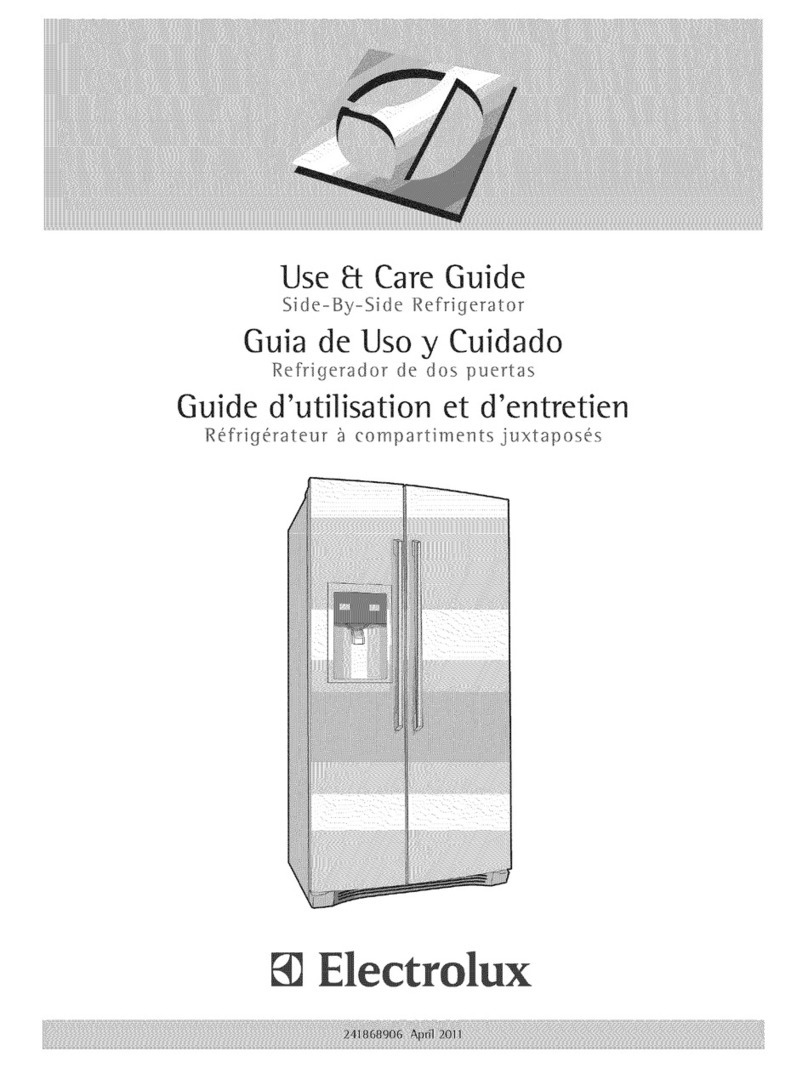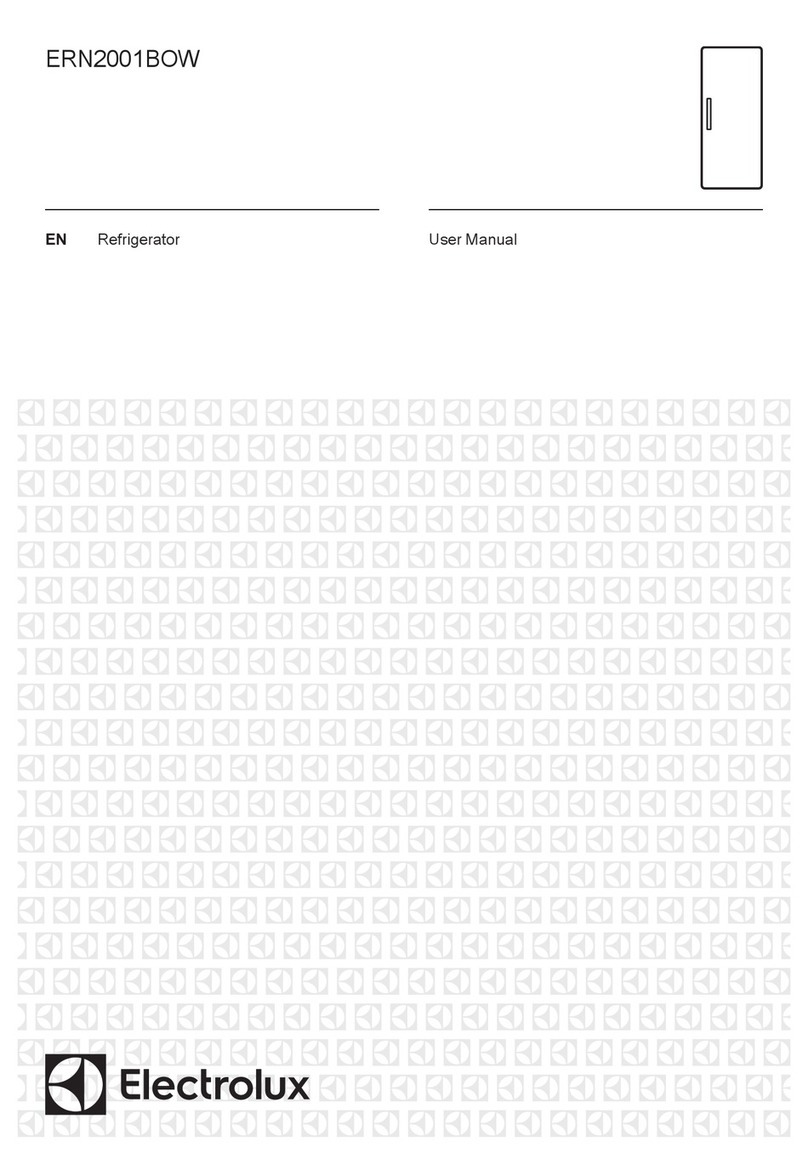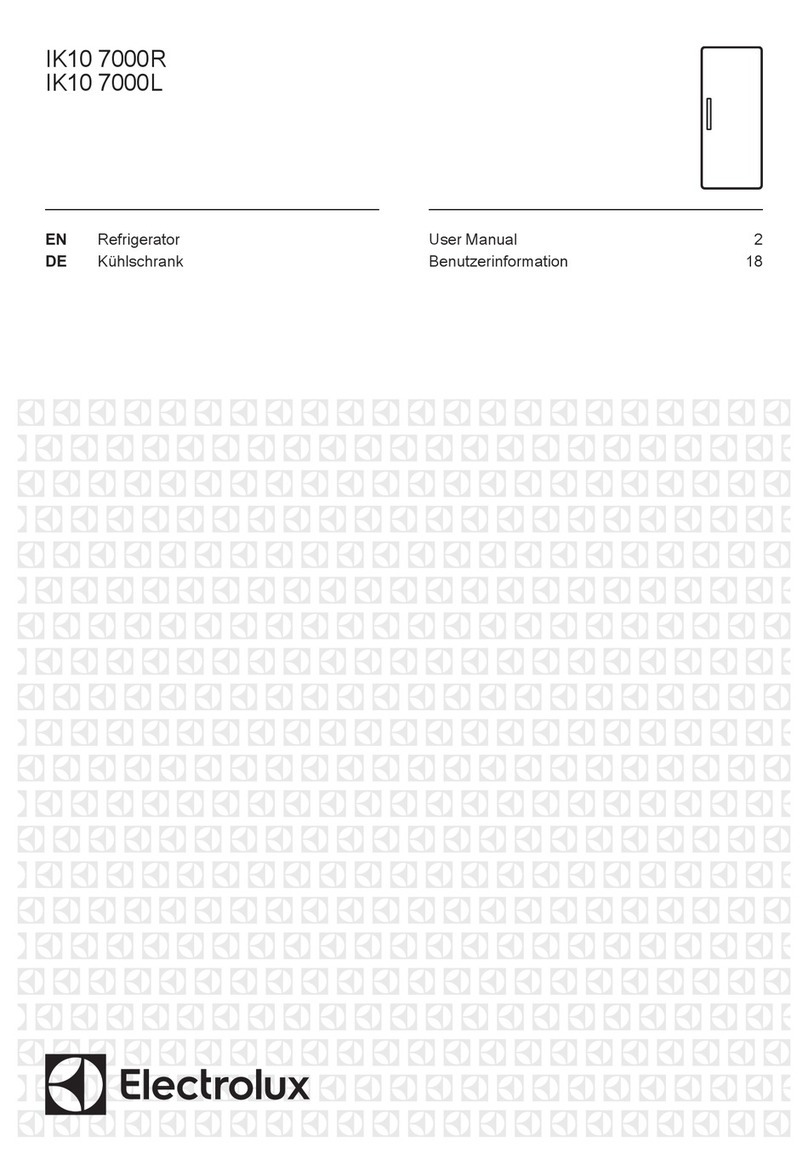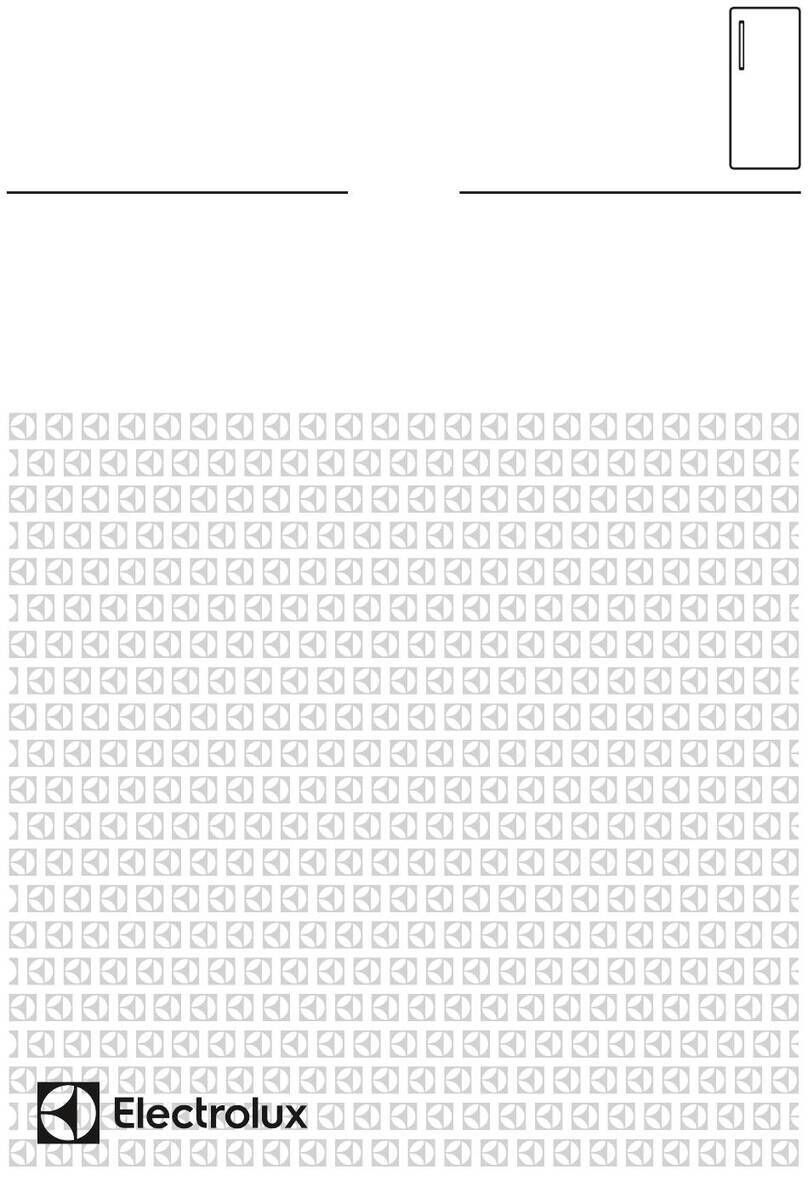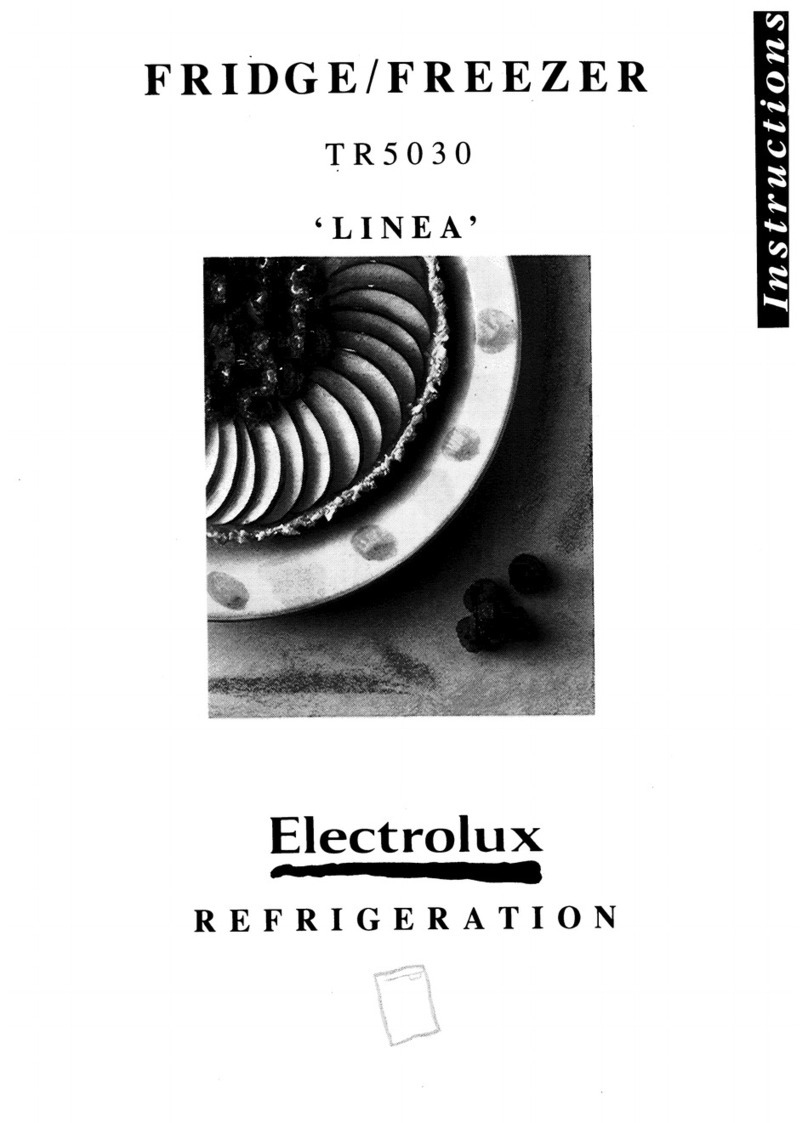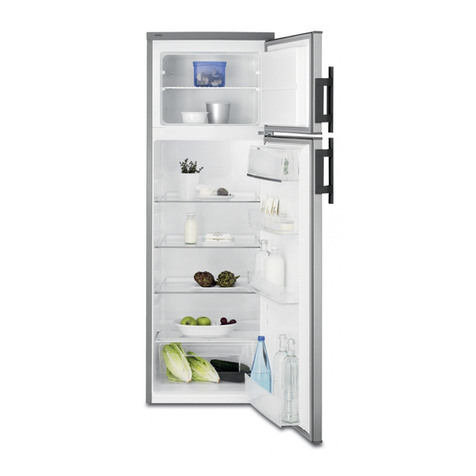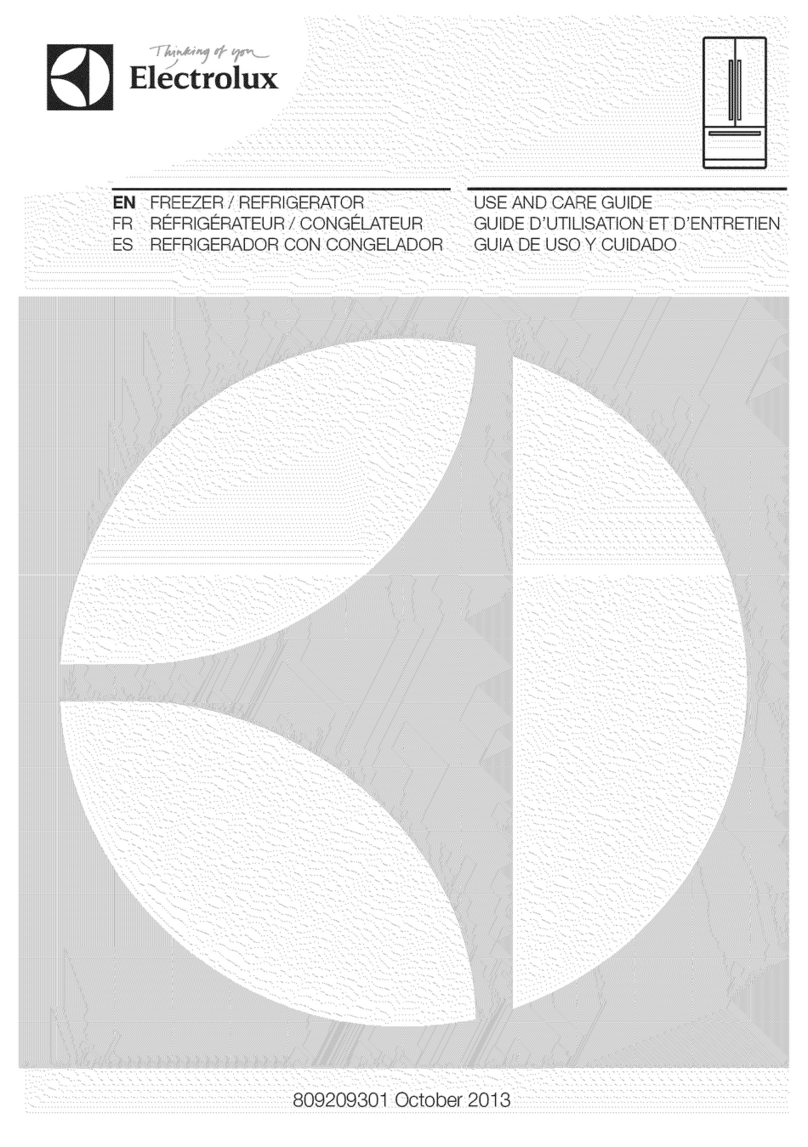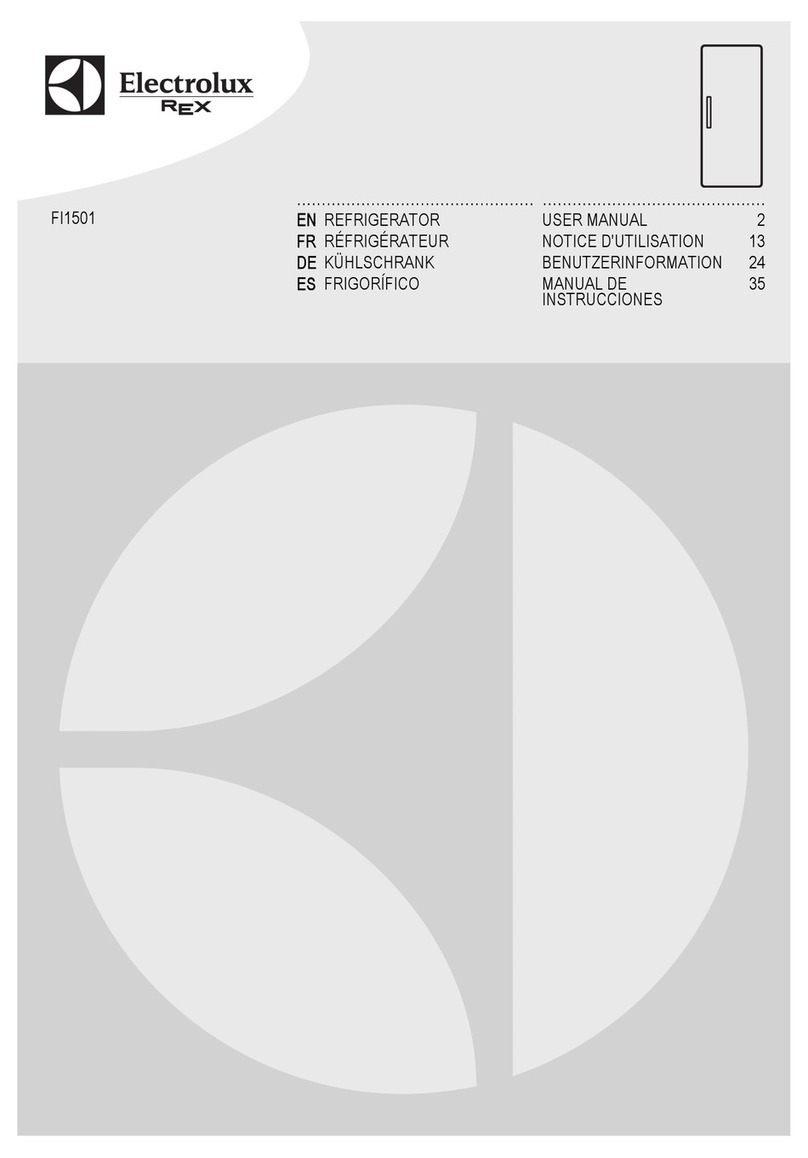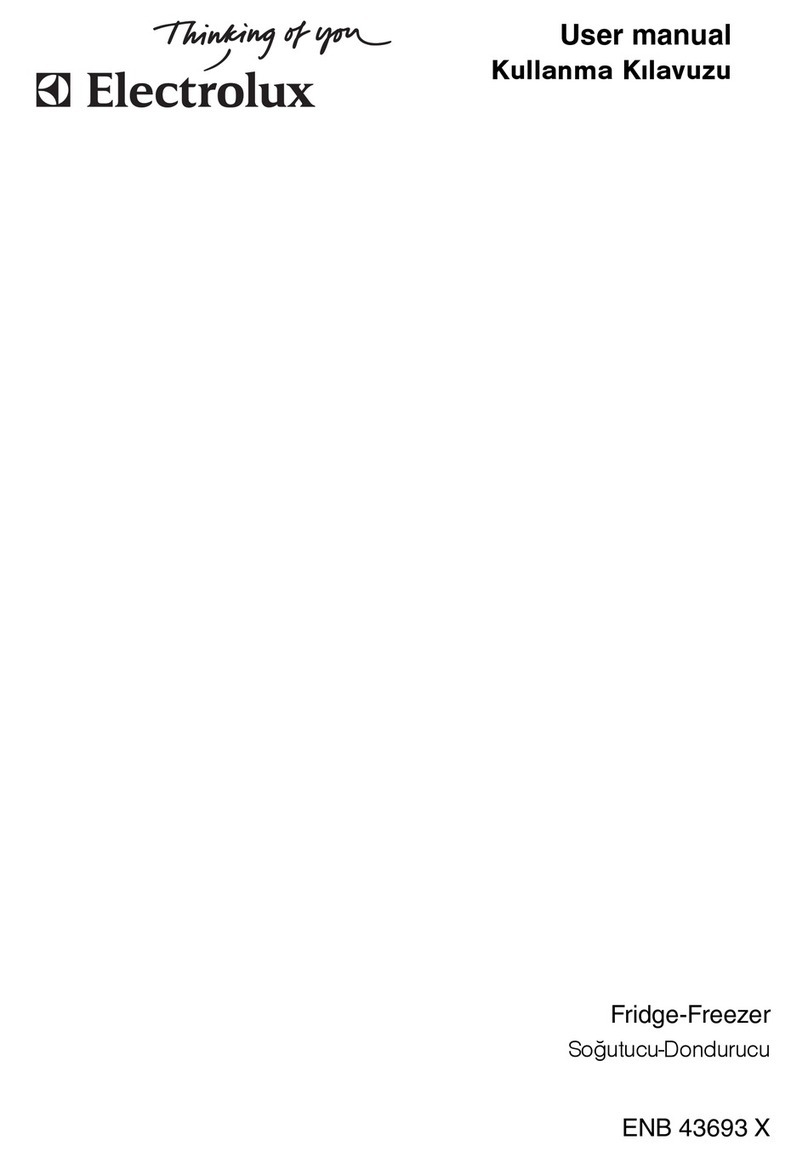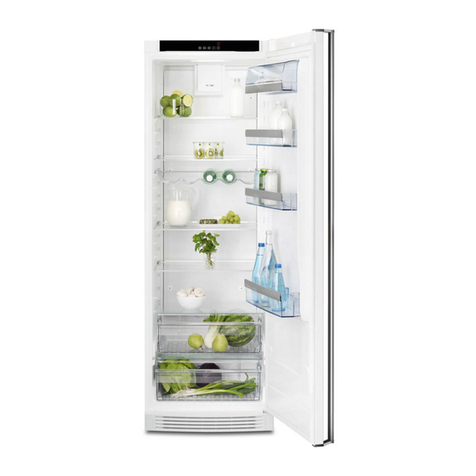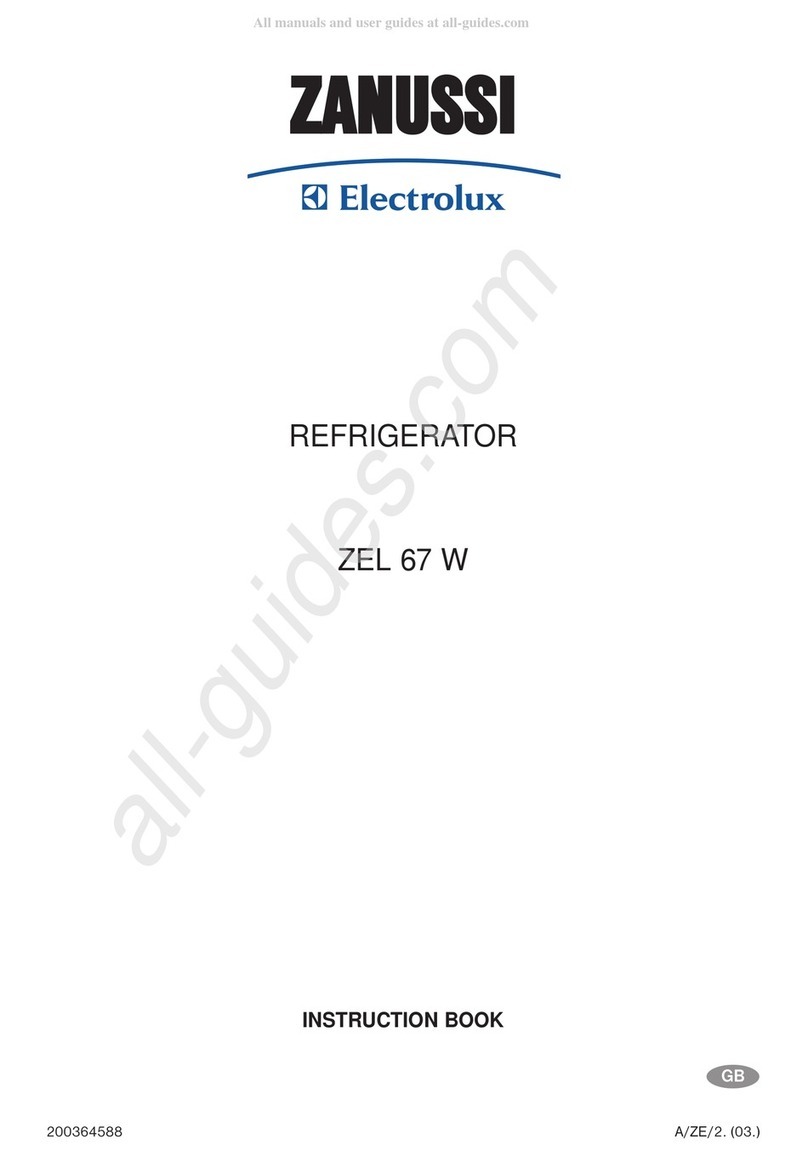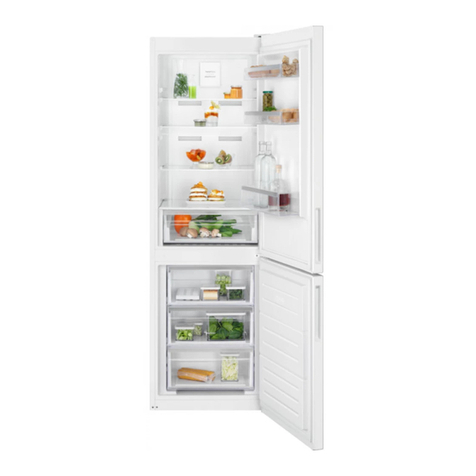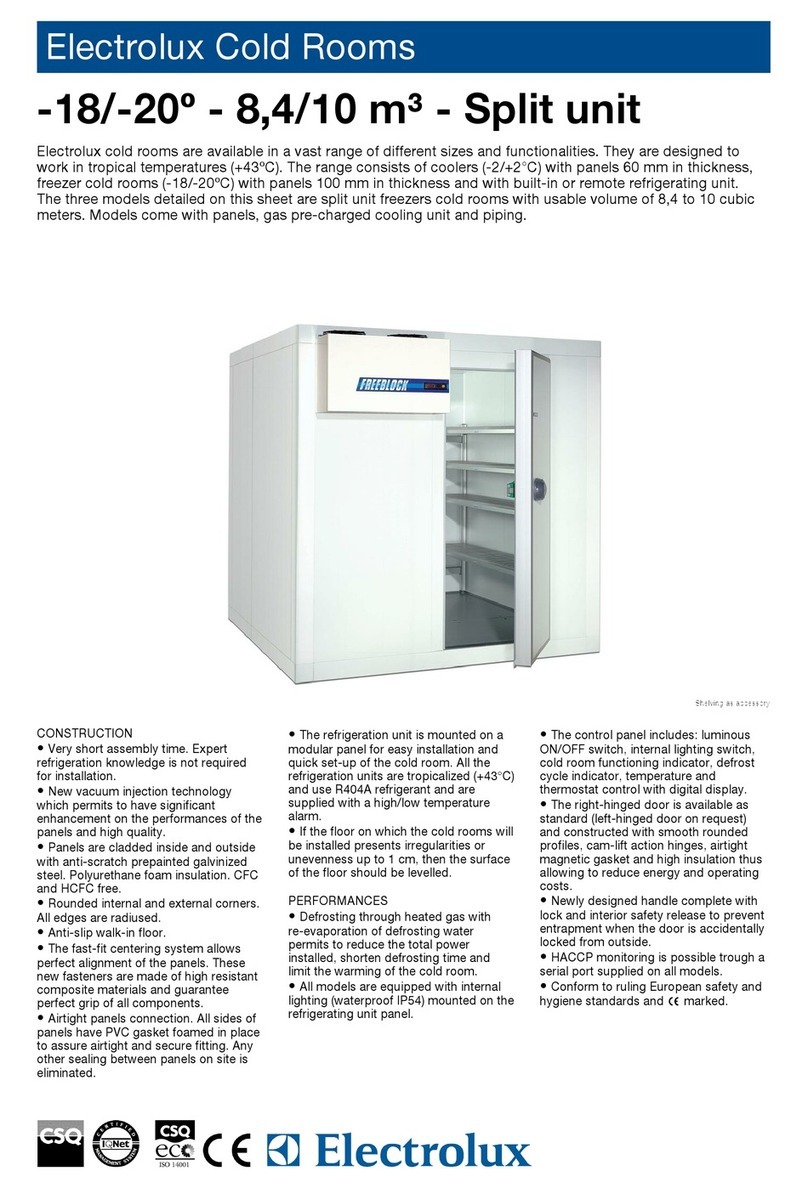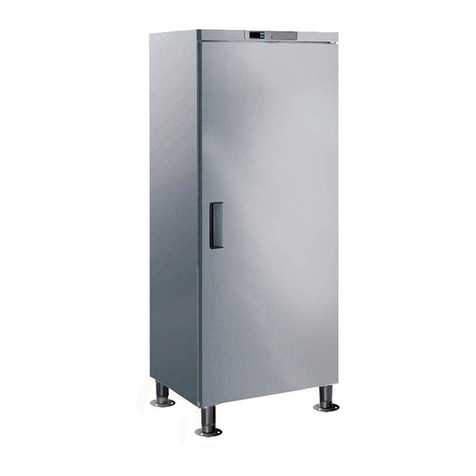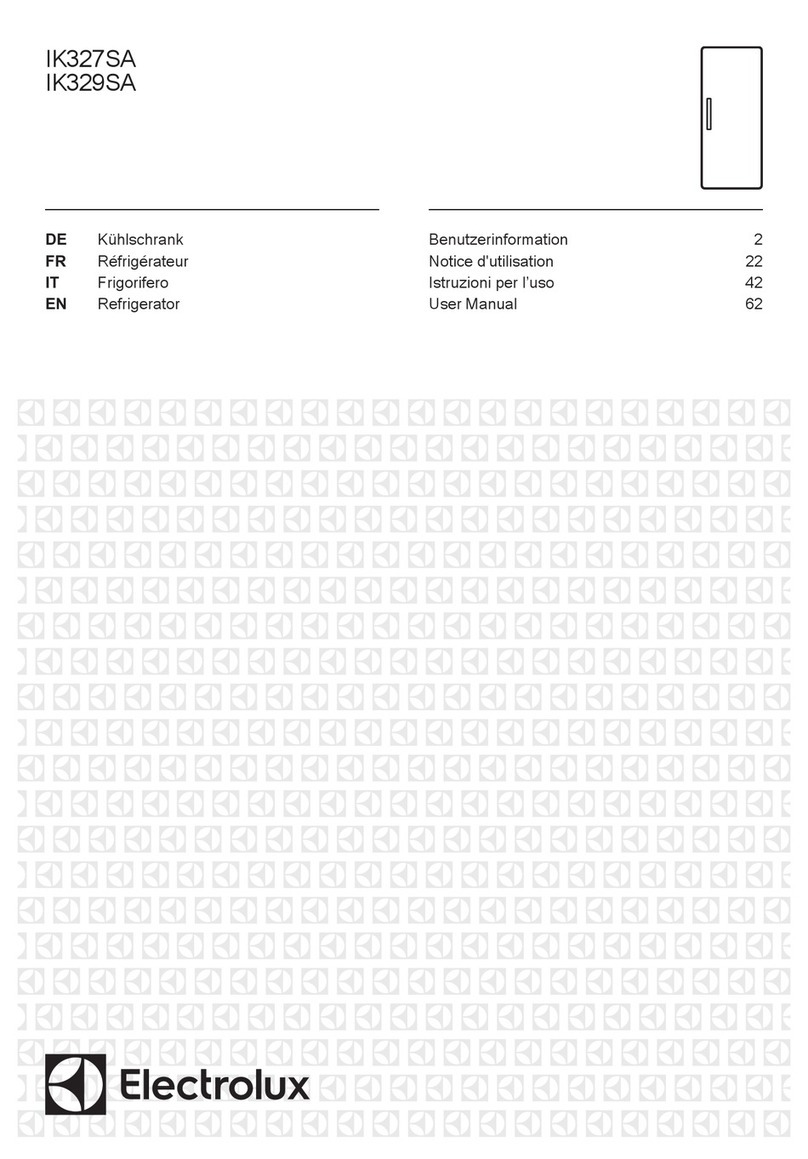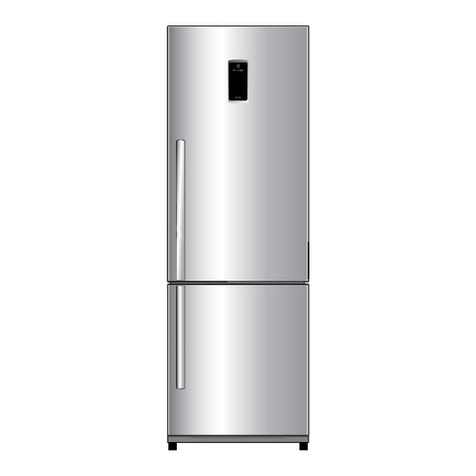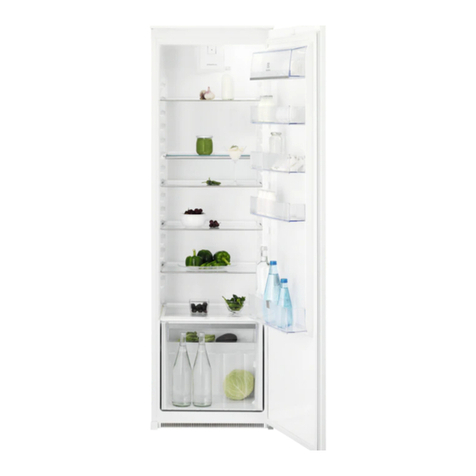7
• Keep the time between buyin chilled food and
placin it in your frid e as short as possible. Tests
showed that the temperature of 1 litre of oran e
juice rose to 22°C in an hour between the
supermarket and home. It then took 11 hours to
et down to 7°C in the refri erator.
• Keep the refri erator door closed as much as
possible.
• Do not push food to ether too much, try to allow
air to circulate around each item.
• Cool cooked food as quickly as possible but do
NOT place in the refri erator until cool. (Leave
food in a cool place in order that it can then be
placed in the refri erator as soon as possible).
• Do NOT mix raw and cooked meat, they must be
in separate containers. Take care not to let the
meat juices drip onto other food. If the meat does
drip, remove everythin and clean thorou hly.
• Do not store food uncovered.
• The best way to defrost food is to put it in the
refri erator to thaw slowly.
• Remove suspect food from your refri erator and
clean (refer to “Maintenance and Cleanin ).
• Never allow spilla es to dry and harden.
• Ensure that food placed in the freezer is dated
and labelled and used in date order to ensure
that food is consumed at its best.
• It is important that food is used before its “best
before” date.
• Store e s in the e rack provided in the
refri erator door. Discard any broken or chipped
e s.
• Re ularly check the refri erator door seal to
ensure that it is clean and free from debris.
• Always wash your hands with soapy water and
dry them with a clean towel before handlin food.
• Keep work surfaces clean and avoid cross
contamination by not usin the same work
surface or knife, without washin them thorou hly
in between.
• The fresh foods to be frozen must be fresh and of
the best quality.
• The size of each pack should be small enou h to
ensure that it is used in one o. Small packs
freeze more quickly and uniformly and ive better
results.
• Frozen food, once thawed, must not be refrozen.
Lean food keeps better and lon er than fatty food,
salt reduces the stora e time.
• Wrap the food in polythene or aluminium freezin
ba s or foil so that they adhere to the food and
provide an airti ht seal.
• Packa in which is swollen or has traces of
refrozen water droplets on the pack could indicate
that the product has not been kept at a suitable
temperature and that it may have lost its ori inal
quality. Partially thawed food must not be
refrozen, it must be consumed within 24 hours.
Never exceed the stora e times indicated.
• Never place bottles or cans of fizzy drink in the
freezer as they may explode. Containers with a lid
must not be filled to the brim.
• Do not open the door or place extra fresh food in
the freezer next to food which is already frozen as
this could cause the temperature of the frozen
food to rise and its quality and stora e life to
reduce.
• The symbols on the drawers show different types
of frozen oods.
The numbers indicate stora e times in months for
the appropriate types of frozen oods. Whether
the upper or lower value of the indicated stora e
time is valid depends on the quality of the foods
and pre-treatin before freezin .
HEALTH AND SAFETY GUIDELINES
Because o consumer demand, preservatives have been removed rom many pre-prepared oods. This
together with the changes in shopping habits to a once-a-week shop, mean that sa e handling and
storage o ood is even more important than ever.
The ollowing tips should help you to ensure that the ood in your home is in as per ect condition as
possible.
14
INSTALLATION
Positioning
This appliance should only be installed at a location
where the ambient temperature corresponds to the
climate classification indicated on the ratin plate,
which is located at the left on the inside of the
appliance.
The followin table shows which ambient
temperature is correct for each climate classification:
SN +10°C to + 32°C
N +16°C to + 32°C
ST +18°C to + 38°C
T +18°C to + 43°C
It should be located in a dry atmosphere, out of
direct sunli ht and away from extreme temperature
e. . not next to a boiler or radiator, or in a very cold
room e. . an outhouse, where the temperatures may
fall below 10°C (50°F). If these temperatures are
exceeded i.e. colder or warmer, then the appliance
may not operate correctly.
You should also ensure that air can circulate freely
around the back and the top of the cabinet. There
must also be at least 100 mm (4”) distance between
the top of the cabinet and any overhan in kitchen
furniture (A). Ideally, the appliance should not be
positioned beneath overhan in furniture (B).
There should also be a ap of 25 mm either side of
the appliance. Do not obstruct the space
underneath. The back of the cabinet may be placed
close to the wall but must not touch it. DO NOT
install in places with restricted ventilation.
Adjust the level of the appliance by screwin out the
adjustable foot, or feet, at the bottom of the cabinet
usin your fin ers.
Warning
IF YOU ARE DISCARDING AN OLD APPLIANCE
THAT HAS A LOCK OR CATCH ON THE DOOR,
YOU MUST ENSURE THAT IT IS MADE
UNUSABLE TO PREVENT YOUNG CHILDREN
BEING TRAPPED INSIDE.
Important
It must be possible to disconnect the appliance from
the mains power supply; the plu must therefore be
easily accessible after installation.
Rear spacers
The plastic ba containin all relevant
documentation also contains two spacers to be fitted
into special holes in the back of the appliance.
Fit the spacers into the holes, takin care to ensure
that the arrow (A) is positioned as shown in the
dia ram. Then turn them throu h 45° (arrow (A)
vertical) until they lock into place.



